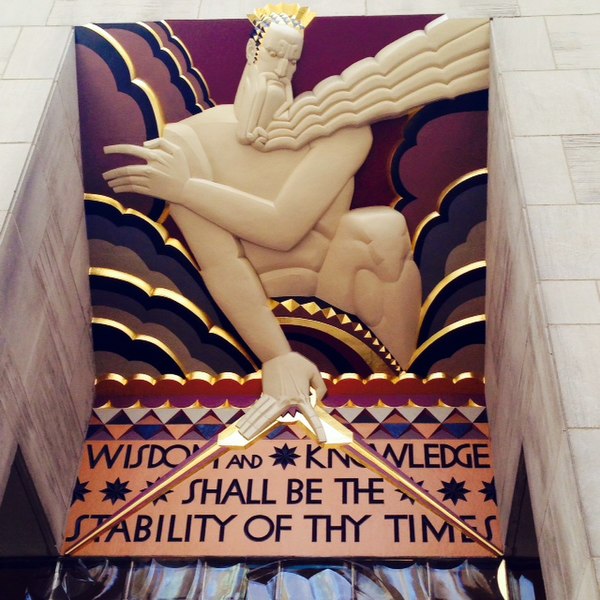The servant songs are four songs in the Book of Isaiah in the Hebrew Bible, which include Isaiah 42:1–4; Isaiah 49:1–6; Isaiah 50:4–11; and Isaiah 52:13–53:12. The songs are four poems written about a certain "servant of YHWH". Yahweh calls the servant to lead the nations, but the servant is horribly abused by them. In the end, he is rewarded.
Carving from the Way of the Cross in St. Mel's Cathedral, Ireland
16th-century Dutch engraving of the Nativity, Crucifixion and Resurrection of Jesus; under the Crucifixion image is a quotation from the servant song in Latin translation: Vere languores nostros ipse tulit et dolores nostros ipse portavit et nos putavimus eum quasi leprosum et percussum a Deo et humiliatum (NIV: "Surely he took up our pain and bore our suffering, yet we considered him punished by God, stricken by him, and afflicted.")
The Book of Isaiah is the first of the Latter Prophets in the Hebrew Bible and the first of the Major Prophets in the Christian Old Testament. It is identified by a superscription as the words of the 8th-century BCE prophet Isaiah ben Amoz, but there is evidence that much of it was composed during the Babylonian captivity and later. Johann Christoph Döderlein suggested in 1775 that the book contained the works of two prophets separated by more than a century, and Bernhard Duhm originated the view, held as a consensus through most of the 20th century, that the book comprises three separate collections of oracles: Proto-Isaiah, containing the words of the 8th-century BC prophet Isaiah; Deutero-Isaiah, or "the Book of Consolation",, the work of an anonymous 6th-century BCE author writing during the Exile; and Trito-Isaiah, composed after the return from Exile. Isaiah 1–33 promises judgment and restoration for Judah, Jerusalem and the nations, and chapters 34–66 presume that judgment has been pronounced and restoration follows soon. While few scholars today attribute the entire book, or even most of it, to one person, the book's essential unity has become a focus in more recent research.

Michelangelo (c. 1508–12), Isaiah, Vatican City: Sistine Chapel ceiling
Detail of entrance to 30 Rockefeller Plaza showing verse from Isaiah 33:6 Rockefeller Center, New York
The Isaiah scroll, the oldest surviving manuscript of Isaiah: found among the Dead Sea Scrolls and dating from about 150 to 100 BCE, it contains almost the whole Book of Isaiah and is substantially identical with the modern Masoretic text.
Isaiah 2:4 is taken as an unofficial mission statement by the United Nations. (Isaiah Wall in Ralph Bunche Park, a New York City park near UN headquarters.)






